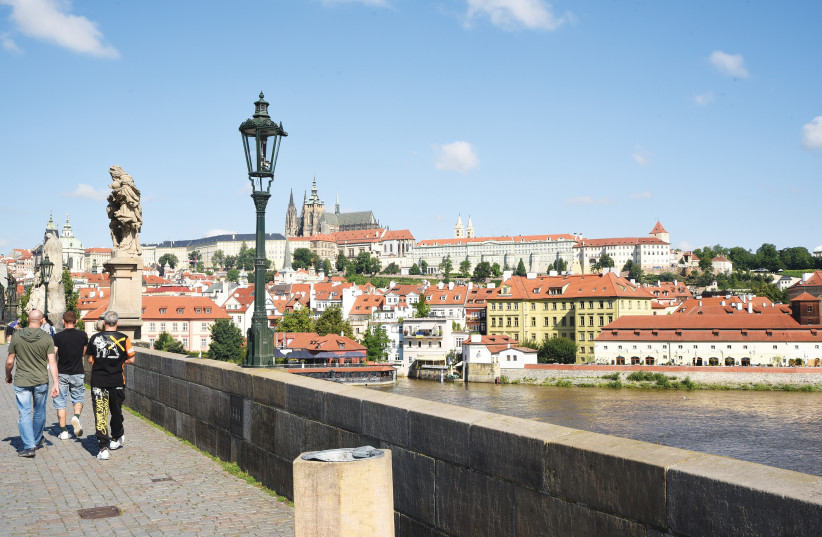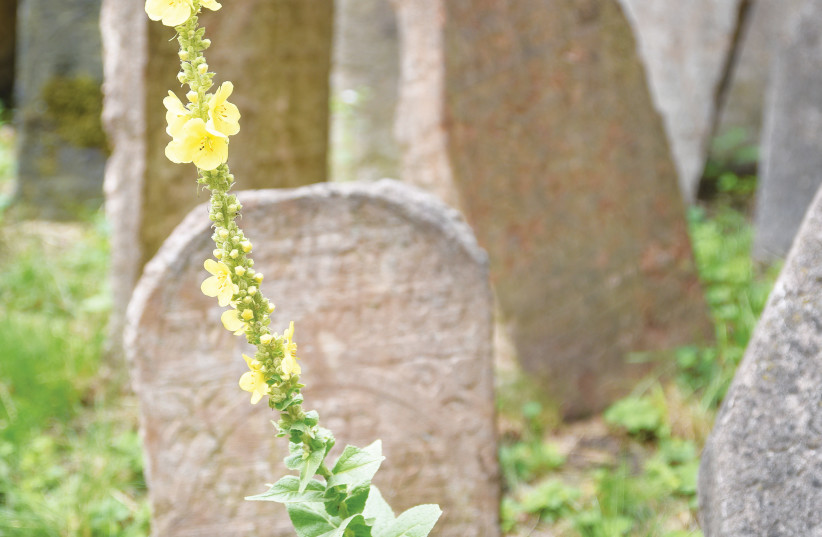More than a thousand years of history spring to life from the viewing deck of Prague’s Old Town Hall. Prague Castle dominates the far side of the Vltava River with the hilly Lesser Town nestled below. On this side, the Old Town dates back to the 13th century, with construction of the so-called New Town beginning 100 years later.
The Jewish quarter can trace its roots back almost as far with records of the first Jews to arrive dating back to the 900s. While much of the Jewish area was demolished in the early part of the 20th century to make room for more modern buildings and a burgeoning population, remarkably six synagogues survive to this day and are the main elements of the Jewish Museum of Prague.
Completed in 1270, the Old New Synagogue is the Jewish prayer house in longest continual use in the world with daily evening services held in the Gothic synagogue. Half a block away, just past the old Jewish town hall, stands the Maisel Synagogue from the late 1500s, which is the best place to start a tour of the Jewish museum offering.
It took a quarter-of-a-million images to help create a 3D flythrough film showing what the Jewish quarter would have looked like in the 19th century. While today its streets are broad and house many of Prague’s finest stores, it used to be crowded with narrow streets connecting Jewish institutions and homes.
The Pinkas Synagogue at the entrance to the old Jewish cemetery is Prague’s memorial to the 80,000 Czech Jews killed in the Holocaust. The historic synagogue’s walls are adorned with the names of the victims. Part of the loft is dedicated to an exhibition of the drawings of Czech children drawn while they were in the Terezin concentration camp. The few dozen drawings on display capture the mix of emotions of the children – memories of home, celebration of religious festivals and the raw images of the camp.

There are a remarkable 12,000 headstones in the small cemetery but because of a lack of room, people were buried in layers with estimates putting the actual number of graves at 100,000. Perhaps the most famous person buried in the cemetery is the Maharal of Prague, Rabbi Judah Loew ben Bezalel. While Torah scholars study his religious works, the broader public is probably more familiar with his creation – the Golem. Legend has it that this clay-based protector of the ghetto lived in the attic of the Old New Synagogue.
A short walk from the medieval synagogues brings you to the Spanish-style synagogue, a Reform temple built in the 1860s. Just in front,is the most famous statue of the Jewish son of Prague, Franz Kafka. Unimpressed by his own work, the author of Metamorphosis, The Trial and The Castle, burnt some of his manuscripts. He left instructions when he died for his friend and biographer Max Brod to destroy his remaining work. Thankfully Brod thought better.
Many non-Czech intellectuals and artists made the pilgrimage to this city with some eventually calling it home – Albert Einstein, Giacomo Casanova and Wolfgang Amadeus Mozart among them. Casanova and Mozart used to meet in the palace that is now the Mozart Prague Hotel. This fine building abuts the river and offers stunning views toward the castle. Friendly staff ensure a great stay just two minutes from the Charles Bridge and five from the Old Town Square.

Most tourists choose to walk to the castle via the Charles Bridge, named after King Charles IV, revered by Czechs. It’s quite a hike up to the castle but the renaissance French- and Italian-style buildings en route give a fascinating glimpse into the professions that abounded here hundreds of years ago.
The castle compound, the biggest in the world, is a must for history buffs. It has been the seat of Bohemian, Austro-Hungarian and Czech power for a millennium. The views are enchanting and for those of us who can’t go without a Starbucks, the tiny castle branch offers one of the best outlooks over the city.
The astronomical clock
BACK IN the Old Town, the No. 1 tourist site is the astronomical clock, the oldest working one of its kind in the world. Apostles, a skeleton, a Turk and other statues perform a 47-second show every hour as hundreds of tourists gather below to capture this Instagrammable moment.

But there are much quieter attractions too just minutes from the Old Town. Take for example the newly opened Manifesto Market, just a five-minute tram ride from downtown. For now, its clientele are mainly locals looking for an amazing gastronomic afternoon or evening out. The unique outdoor venue includes 14 eateries presenting street food through to Michelin-styled gastronomy, two bars and a paddling pool where business people will often dip their feet while filing their final emails for the day. The food is truly international as are the staff, serving up dishes from Mexico, Brazil, Ukraine, India, Belgium, South Korea, Japan and more.
Field by Czech Masterchef fixture Radek Kasparek offers first-class dining. The Michelin-starred restaurant lies between the Old Town and the Jewish quarter. It offers six- and 10-course dégustation menus, including an excellent vegetarian version.
The Jelinek Slivovitz Museum is a wonderful visitor center for all the family – though the tasting session is definitely 18+. The interactive exhibit takes you through the company’s history, out into the countryside, shows you the technology and uses VR to let you know what it feels like to be a plum. The post-tour samples are generous and include a kosher offering. You might want to factor in a siesta after your visit.
For a different experience, try the Original Beer Spa, a 30-minute dip in beer with a beer tap within arm’s reach, followed by a half-hour lounge on a straw bed.
While most visitors to the Czech Republic enter the country via Prague, the national tourism organization hopes visitors will travel outside of the city limits. The country offers historic spa towns, elegant castles, baby ski slopes, an enticing countryside and accommodation to suit every taste.
This summer there were 30 direct flights from Tel Aviv to Prague with Delta launching a route from New York. Other US airlines are expected to follow suit after a COVID hiatus.
Mark and David host The Jerusalem Post Podcast – Travel Edition jpost.com/podcast/travel-edition. They were the guests of Prague City Tourism and Czech Tourism.
